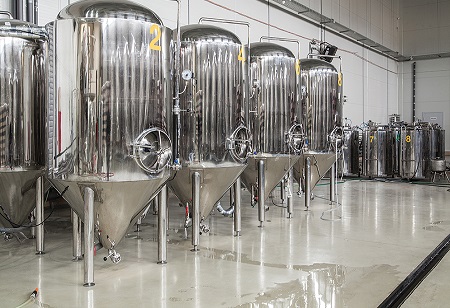The science that deals with the absorption of heat at a particular temperature from surroundings at a lower temperature and preventing it to a relatively higher temperature at the cost of a few external works following Clausius's statement of the 2nd law of thermodynamics is refrigeration. This landscape is one of the largest economic industries, which covers cooling, precooling, air conditioning as well as freezing applications for several commodities & people. This appears to be an energy-intensive industry by consuming about twenty percent of the overall electricity generated worldwide.
The
refrigeration segment comprises coolers, air conditioners, pre-coolers, household fridges, refrigerators, and freezers for several applications. These range from applications such as food cooling to space cooling. Therefore, refrigeration has found its significance in numerous engineering & industrial segments & one of them is to process, preserve & nourishment of food by storing them in those places where the temperatures are lesser than that of the surroundings.
Refrigerants used in food processing industries
While
refrigerants are nothing but the working fluids used in refrigeration systems, the selection of these plays a significant role in any refrigeration industry. Therefore, it has been a real challenge in developing & implementing refrigerants that possess desirable thermodynamic properties & high energetic performances. Earlier, refrigerants were selected on the basis of their thermodynamic properties alone, however, eventually, the focus has also been made on the ozone depletion potential & global warming potential of refrigerants.
Shelf life of frozen foods
The storage life of food is defined as the length or duration of a food product that is stored under specified conditions so that it is liable for consumption, as per the International Institute of Refrigeration. A variety of food products possess different storage lives. Furthermore, it should be
considered that the storage life of a specific food product would vary as per its location & various other ecological aspects.
The various types of refrigeration processes involved in food processing
The important principle behind food preservation by refrigeration is to mainly decrease & maintain the food temperature to mitigate any detrimental/undesirable changes that occur in the food. These can either be physiological or microbiological or also biochemical & physical and this, in turn, can facilitate enhancing the nutritional quality of the food. While there are multiple refrigeration processes that are into in the processing & nourishment of food, the following are some of the refrigeration techniques implemented one after:
Pre-cooling: rapid cooling is highly crucial in order to retard the metabolism of food products & increase their life span. The lesser the temperature, the better the quality as well as longevity of the food products. Different types of refrigeration techniques have been proposed based on the type of food product. These include vacuum cooling for green leafy vegetables, hydro cooling for small fruits, & blast-air system for cooling the surfaces of meat products. The others comprise cooling of milk & other dairy products in specialized tanks and pulsed air in some other products etc.
Chilling: the next step after precooling is chilling. The food product should be chilled & maintained at a favorable temperature. While chilling is often carried out in classic cold rooms that are equipped with sufficient ventilation, the chilling & conservation temperatures depend on the sensitivity of the product. For instance, for high-sensitivity products like ginger, mangoes, & sweet potatoes temperatures below eight to 12 degrees Celsius are not recommended. This is because they can endure metabolic disturbances which shorten the life of the products. For medium-sensitivity products like green beans, tangerines, and potatoes, it is possible to reduce the temperature. However, not less than four to six degrees Celsius. And lastly, for low-sensitivity products, a temperature of two-three degrees Celsius, down to just above the freezing point is recommended.
Freezing: the process of reducing the temperature of a product below its solidification point is known as freezing. While freezing is used to hinder the metabolism of fruit & vegetable products the product’s durability increases based on how long it stays frozen.
Super-cooling and super-chilling: these are the new processes that are used in storing food products. Supercooling is reducing the temperature of any food product just below its freezing point without any formation of ice. In other words, it is the partial freezing of a food product at a specific temperature just below its freezing point.
In a nutshell
Refrigeration techniques are to a greater extent used in food processing industries for purposes such as storage, preservation as well as nourishment of food. A cold chain has been established for the storage, maintenance, transportation as well as other industrial parameters that are associated with food processing. The 1st step in the cold chain is industrial refrigeration where food is processed & stored prior to transport, retail & consumption.
